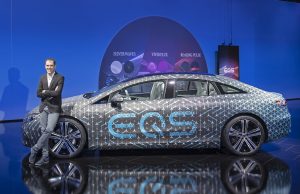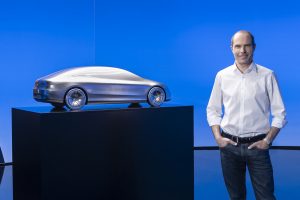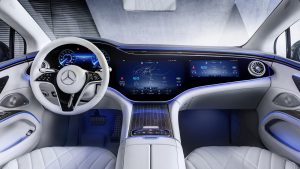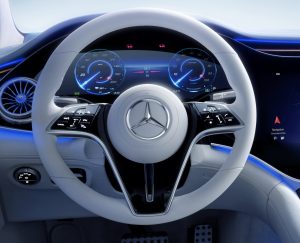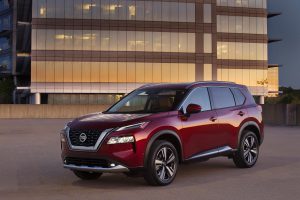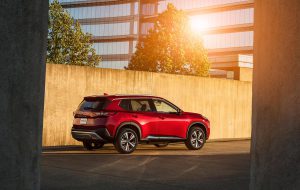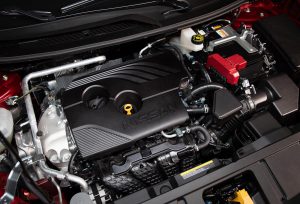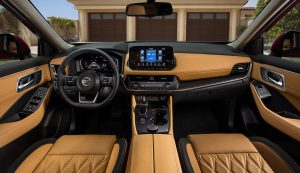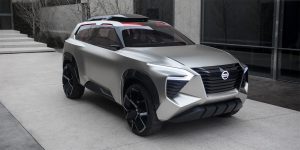One thing’s for sure: there’ll be no mistaking the new Mercedes EQS sedan when it rolls down the street.
Think of the EQS as the all-electric alternative to the German automaker’s familiar S-Class flagship. But you clearly won’t confuse the two when it reaches showrooms in autumn. Some new battery-electric vehicles share the same design language as conventional, gas-powered products. With EQS, Mercedes goes off in an entirely new direction, one it’s been hinting at with concept vehicles like the 2019 Vision EQS.
The production model adopts what the automaker calls a “one-bow” design. It takes the look of the coupe-like Mercedes CLS to extremes. The result could have rolled off the set of a sci-fi film. But there are practical benefits in terms of range and interior roominess, as well.
“We said we have to go further” than just packing batteries into a conventional looking product,” Steffen Kohl, Mercedes’ director of advanced exterior style, said during a media webinar. The EQS “carries the future of Mercedes-Benz,” he added, noting the “one-bow” language of the EQS will strongly influence other products to come from the new, all-electric Mercedes-EQ sub-brand.
Plenty of power and range
EQS rides on a skateboard-like platform, mimicking virtually all new battery-electric vehicles. Its batteries, motors and other key electrical components sit below the floorboards.
The automaker will reveal full powertrain details during a formal unveiling April 15. But EQS uses twin motors, one on each axle, drawing power from a 108 kilowatt-hour battery pack. That provides about 435 miles of range using the European WLTP test cycle. The EPA rating should come in somewhere about 350 miles, according to industry observers.
The layout moves the sedan’s wheels close to the vehicle’s corners. It also frees up space where a traditional gas or diesel engine would be mounted, providing significant flexibility to the Mercedes design team.
Shorter wheelbase, longer cabin
The cab-forward design features a short nose, the angled, one-piece aluminum clamshell hood rising aggressively to flow into a steeply raked windshield. Instead of a traditional, two- or three-box layout, the look is like that of a single bow line, explained Robert Lesnik, who led the exterior design effort.
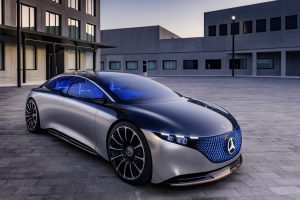
The Mercedes-Benz Vision EQS concept provided a framework for the company’s new electric luxury sedan.
“EQS will be the world’s best production car ever in terms of aerodynamics,” with a drag coefficient of 0.20 significantly better than even the sleekest of today’s supercars, he explained.
The effect “looks optically lower than it is,” Lesnik added.
The front end features a new grille with “abstracted, three-dimensional star pattern(s),” according to Mercedes. It’s framed by slit-like headlamps flowing into the front quarter panels.
“When people ask why we need a grille anymore,” Lesnik explains that it is “not an air intake. It’s a face.”
“Coming from the future”
The side panels lack the normal creases found on conventional Mercedes models, though the greenhouse does pinch in towards the trunk, giving the EQS a sense of muscularity.
Around back, the most distinctive feature is a light band connecting what Mercedes calls “curved, 3D helix” taillamps.
From nose to tail, the new EQS measures 5.2 meters, or 204.7 inches. That’s about 3.5 inches shorter than the U.S. version of the latest Mercedes S-Class. But the electric sedan has more room for four passengers, its cabin pushed forward into what would normally be the engine compartment.
As distinctive as the exterior might be, the interior takes things even further, said Peter Balko, who oversaw development of the cabin. “We wanted our interior to be modern,” he explained, “as if coming from the future.”
Buyers will have numerous options
Buyers have several key options to choose from. The showpiece layout uses the new hyperscreen concept first shown on the latest S-Class. It features a seamless digital cluster running the entire width of the instrument panel. The organically shaped glass blends three different displays, starting with the digital gauge cluster, the touchscreen infotainment screen and a separate display for the front passenger.
EQS offers a digital gauge cluster and a large, free-floating, Tesla-like infotainment screen for those seeking a more conventional look. The space in front of the passenger can be outfitted with an assortment of different woods and fabrics and even a version of the Star Pattern grille.
The EQS will “touch almost all of your senses,” said Kohl. Among other things, the product development team has come up with three distinctive, user-programmable “soundscapes.”
Sounding off
While battery cars aren’t entirely silent, they are significantly quieter than vehicles with conventional internal combustion engines. Motorists can enjoy the lack of noise or they can opt for one of the soundscapes, “depending upon the emotions of the moment,” said lead sound engineer Thomas Kuppers.
- Silver Waves is meant to be soft and soothing;
- Vivid Flux is “shimming and explosive,” a bit “techie but (with) warmth,” said Kuppers; and
- Roaring Pulse is “pretty raw, with “the growl of thunder,” especially under aggressive driving.
“We haven’t finished yet,” Kuppers added, noting that, “There will be new soundscapes over the life of the vehicle that we will download through over-the-air updates.”
The new EQS will borrow from the conventional S-Class by also appealing to the sense of smell, Mercedes officials noted. The new BEV will have the ability to inject scents into the cabin, including some designed specifically for the new model.
/**/
